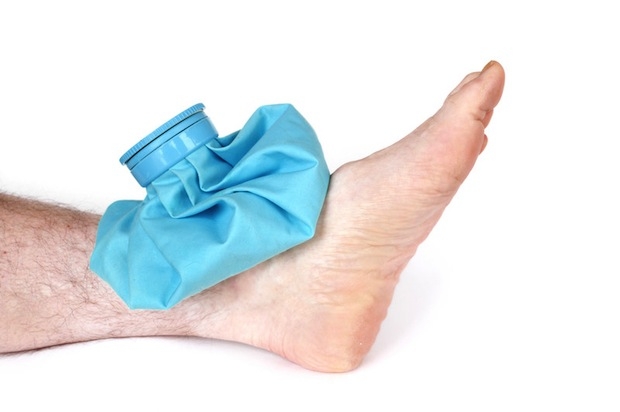In continuation of our last article’s topic: Common Exercise Injury Prevention, here are some ways to treat minor exercise injuries.
Ice It!
Ice is a Godsent when it comes to injury. It’s excellent for inflammation and in reducing pain. For best results, apply an ice pack for 10 -20 minutes as soon as you can after an injury. Wrap the ice pack in a thin cloth or towel to prevent direct contact with skin. Repeat the ice treatment every hour for the first day, then four times a day for the next three days. After 72 hours, switch to heat treatments such as a hot water bottle or heat pack, using the same system. A hot bath may be great heat treatment for injured muscles, bruises, and aches and pains.
Elevate It.
Elevate an injured limb as soon as you can after an injury. Elevation forces gravity to drain fluid away from the injured tissues reducing swelling, inflammation, and pain. Keep an injured arm, leg or foot up on a pillow. An injured hand should always be elevated higher than your heart. Do this by resting your elbow on a pillow or table and keep your hand up, or put your arm in a sling.
Wrap It.
Protect your small injuries by applying bandages, elastic wraps, or splints in order to protect against further injury.
If the skin is broken be sure to clean the wound and apply a bandage to prevent infection.
Applying compression by lightly wrapping the injured area with an elastic bandage can help reduce swelling and inflammation. Swelling may develop over time, hours after you hurt yourself, so keep an eye on it as you may have to loosen your wrap as you go along.
Rest It.
Though staying off of an injury may seem like common sense, many people get frustrated with not being able to move normally and go back to their normal routine way too early in the game. You have to be patient with an injury. Sometimes pushing it can cause a more severe problem later on.
But having an injury can be a blessing in disguise because it allows you to think outside of the box and try different exercises. For instance, swimming can be a great workout while hurt because it takes pressure off the joints.
READ: Pool Workouts and Injury Treatment for more info.
Medicate.
Tylenol is a great choice for pain and inflammation. Stay away from aspirin and ibuprofen for at least a day or two after the injury occurs because they thin the blood and therefore promote bleeding and bruising. You can also use anti-inflammatory liniments, gels, and ointments.
Rehab
After you got the pain and swelling taken care of, the next step is rehabilitation.
Use heat or massage to warm up your injured tissues before you start your rehab exercises. Afterward, apply ice to the area to prevent swelling. Stretching is important to help blood flow into the injured tissue and to prevent stiffness.
Remember to ease back into exercise. As a rule, give yourself two days of rehab for each day of inactivity. Start with gentle range-of-motion exercises, and then gradually work your way to activities like light resistance training; continuously increasing your workout level as you gain strength back. Suspension gyms are a great tool for rehabilitation. Because you are lifting your own body weight, you can easily choose a position that takes pressure off the injury while still getting an amazing workout.
See Physiotherapist Rob Hoffman discuss the benefits of using The Human Trainer for rehab in the video below.
Many injuries can be managed yourself but if the injury doesn’t begin to clear up or gets worse you should see a doctor. You may need a specialist and/or physical therapist to help you on your healing journey.
Remember that injury can happen no matter what you’re doing, so don’t let the fear of injury stop you from working out. Treating a major illness that can stem from lack of exercise will most likely be a lot worse to heal then an injury you’d get from exercise.
Plus, if you use common sense and follow the guidelines in Common exercise injuries: Prevention and Treatment you most likely won’t get injured at all.
Play hard. Play safe.
Resources: Livestrong.com, www.health.harvard.edu, www.getbig.com





 Payments powered by:
Payments powered by:

